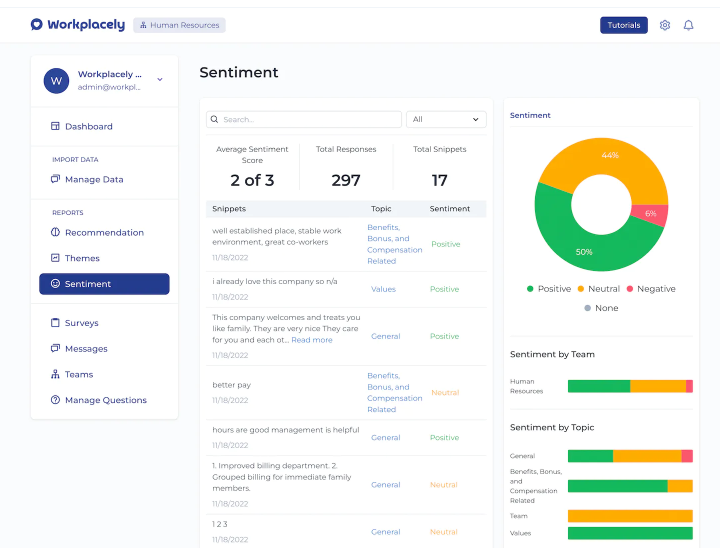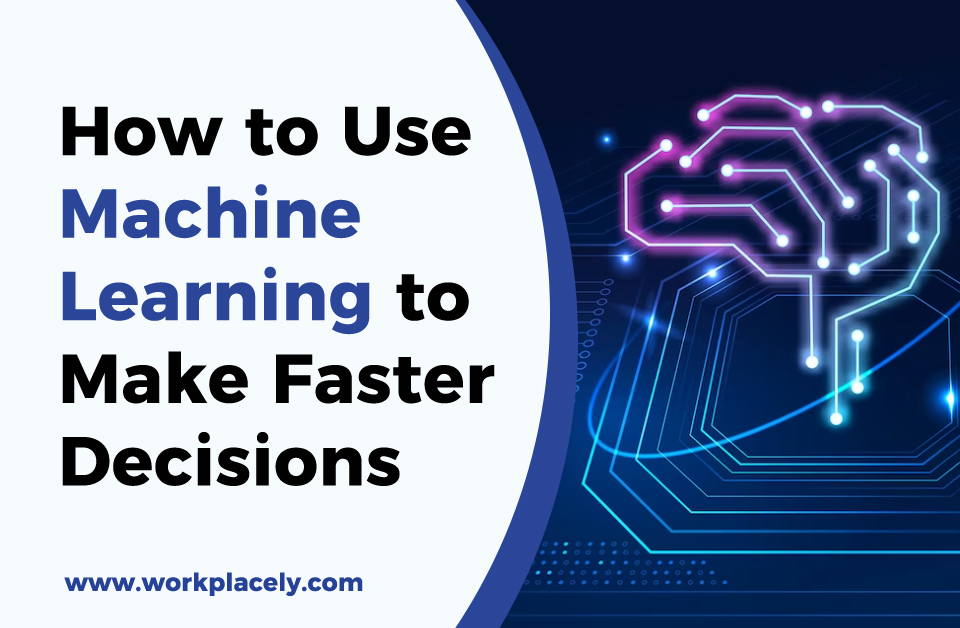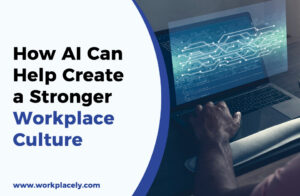Making informed decisions swiftly is a competitive advantage that organizations cannot overlook today. Enter the realm of machine learning, a groundbreaking technology that has the potential to revolutionize how decisions are made.
At Workplacely, we have harnessed the capabilities of custom machine-learning models to expedite decision-making and provide invaluable insights into employee feedback. This post delves into our journey as we explore how to use machine learning effectively to drive faster, data-driven decisions.
The Imperative of Swift Decision-Making
In an era characterized by rapid change and evolving market dynamics, making quick and well-informed decisions can be a game-changer for any organization. However, it’s easier said than done, especially when dealing with vast qualitative data such as employee feedback.
The conventional approach of manually analyzing this data is time-consuming and prone to biases and human errors. To address these challenges, we turn to machine learning and, more specifically, custom machine learning models.
Development of a Custom Machine Learning Model

To set the stage for our exploration, let’s draw inspiration from our research, where we gain insights into the genesis of Workplacely’s custom machine-learning model:
“Despite the deep insights provided by qualitative data, extracting meaningful insights from hundreds or thousands of text responses takes time and effort. We turned to machine learning to help us instantaneously categorize employee feedback and provide organizations with an employee listening strategy that predicts employee and client outcomes.”
The above underlines the core challenge: the need for a more efficient way to distill insights from vast volumes of qualitative data. Machine learning emerges as the answer, allowing it to categorize feedback and predict outcomes swiftly.
The Power of Machine Learning in Decision-Making
- Comprehensive Analysis of Qualitative Feedback
Our custom BERT model is at the heart of Workplacely’s approach to expedited decision-making. Unlike off-the-shelf natural language processing solutions, our model is designed to analyze multiple dimensions of qualitative feedback simultaneously. Traditional models may excel in analyzing individual dimensions like sentiment or emotion, so they must consider the holistic context.
“Although multiple natural language processing (NLP) solutions exist that offer high-level analysis of Sentiment, Topic, Emotional, or Thematic content, they are typically not designed to analyze multiple dimensions of qualitative feedback simultaneously.”
Our custom BERT model bridges this gap by encompassing Sentiment, Emotion, Topic, and Thematic content. Doing so unveils a more complete picture of employee sentiments and opinions.
- Establishing Logical Connections
One of the groundbreaking features of our custom model is its ability to establish logical connections between different categories within employee feedback. It goes beyond mere analysis; it enables organizations to decipher the intricate relationships between various dimensions. For example:
- Feedback with positive sentiment is likely to contain emotions like love or gratitude rather than disapproval or anger.
This depth of analysis enables organizations to make decisions that are not just data-driven but also nuanced and context-aware, which is particularly crucial in employee-centric contexts.
“Below is an illustrative example of the dependent relationships Workplacely’s model establishes between categories: Sentiment, Emotion, Topics, and Themes.”
- Validity and Reliability
Building trust in any decision-making system, especially one driven by machine learning, is paramount. Our custom BERT model ensures this trust through a rigorous training process, as elucidated in our research. It involved human coding of over 1,800 responses, allowing the model to detect nuances in feedback effectively.
The metrics for evaluating the model’s performance, such as the F1 score, are industry-standard measures that guarantee reliability. Achieving F1 scores of over 85% for sentiment and emotion identification underscores the model’s accuracy.
“The model correctly identifies the sentiment and at least one emotion over 85% of the time for both the test and validation sets. These F1 scores exceed 75%, which is generally considered the minimum threshold for deployment.”
Future Prospects: Expanding the Horizon of Decision-Making with Machine Learning
As we look ahead, Workplacely is not content with resting on our laurels. Our commitment to responsible AI and continuous improvement drives us to extend the capabilities of our custom BERT model. It entails gathering more training data for categories with smaller response groups, which prevents overfitting and bias, ultimately enhancing the model’s ability to provide valuable insights.
“To be responsible with its AI model, Workplacely will collect more training data for categories with small group responses to avoid overfitting the data or producing biased results. More data will ultimately help the model learn and generalize better.”
Final Word: Empowering Organizations for Swift and Informed Decision-Making
Workplacely’s pioneering journey into custom machine learning models represents a significant leap toward achieving faster and data-driven decision-making. Our custom BERT model accelerates employee feedback analysis and adds layers of nuance and context that empower organizations to make more informed choices.
“The combination of the Machine Learning approach and the gaming tool used by Workplacely can be replicated by other organizations to gain valuable insights into the sentiments and emotions expressed by their employees.”
Furthermore, our commitment to transparency and responsibility ensures that our model remains a trusted ally in decision-making. As we continue to refine and expand our machine-learning capabilities, we invite organizations to join us on this transformative journey, where technology meets human insights to create happier, more productive workforces and foster a culture of continuous improvement.




